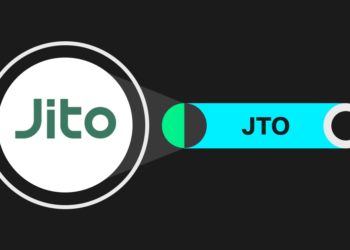Euclid launches hierarchical entrustment model for operators
EigenLayer first proposed the concept of restaking, which allows Ethereum stakers to provide economic security and additional rewards to other public chains, oracles, middleware and other service providers through restaking while obtaining the original ETH staking rewards. By reusing ETH to provide security for different services, it not only improves the efficiency of capital utilization for stakers, but also significantly increases the trust guarantee for different service providers.
The emerging liquidity restaking solution (Liquidity Restaking) provides many benefits to users, but has not yet solved the challenges faced by restaking itself, including accidental fines, operator authority bias and trust assumptions. In order to effectively address these challenges, Euclid proposes a hierarchical delegation model for operators. This mechanism aims to create a fair delegation environment and promote the decentralization of the operator network.
To understand the challenges and solutions, let’s start by understanding the three different roles in liquidity re-staking:
Stakers: These individuals contribute their staked ETH through EigenLayer to provide economic security.
Operators: Operating as nodes, these entities seek to obtain security through EigenLayer through EigenLayer. A more decentralized network of operators means higher security for the services provided by EigenLayer.
Active Validation Services (AVS): They rent security services such as blockchain networks, cross-chain bridges, oracles, etc. from operators through EigenLayer.
The flowchart below describes how the liquidity re-staking protocol helps users re-stake. Stakers deposit ETH/LST into the liquidity re-staking platform. The platform then delegates these funds to operators based on its own choice. After receiving the delegation, these operators use the funds to provide security services to AVS. In return, the operator will receive compensation rewards provided by AVS and distribute them to users.

While liquidity re-pledge platforms effectively simplify the re-pledge process, they still face inherent challenges associated with re-pledge.
Accidental slashing: If AVS or the operator faces an unexpected slashing in some circumstances, such as triggering a program glitch, stakers may lose funds.
Operator authority bias: Pledgers or AVS will be more inclined to choose large operators with authority and reputation.
Trust Assumption: Stakers and AVS need to trust that the operator will perform the task honestly without being slashed.
Euclid, as a liquidity re-pledge platform, has been exploring ways to effectively solve the above challenges. We believe that by changing the existing entrustment model and forming a binding interest among the pledgers, operators and AVS, the above risks can be effectively resolved. Therefore, we propose a method to structure the operator's entrusted rights and interests, which is called the hierarchical entrustment model.

In hierarchical delegation mode , in addition to managing the re-pledge funds entrusted to them by users, operators also need to use part of their own funds for re-pledge and entrust them to themselves. Additionally, operators are required to stake Euclid’s token ECL as part of the tiered portfolio.
Priority consists of the assets entrusted by the pledger;
The inferior tier consists of the operator’s self-entrusted assets and pledged $ECL tokens.
In the event of malicious slashing, the hierarchical delegation model ensures a specific priority for the slashing process. The first thing to be forfeited is the operator’s self-entrusted assets, and then the operator’s pledged $ECL tokens.
By embedding this model into the operator network, it will bring a win-win situation for stakers, operators and AVS, ensuring that all parties involved can benefit. and fair treatment. Please see the flowchart below which describes the liquidity re-pledge process with a hierarchical delegation model.

For operators
h2>Graded delegation ensures that all operators are treated equally. By self-delegating assets and staking $ECL tokens, operators can earn the trust of stakers. While bearing the risk of forfeiture, the operators demonstrated their commitment to act honestly and provide services to AVS.
This model provides strong incentives for operators, including $ECL staking rewards and commission income as an operator.
For AVS
This model promotes broad participation from more operators, minimizing the need to trust a limited number of operators. AVS can also leverage a portfolio of screened and permissionless operators to significantly reduce the risk of operator collusion attacks and increase decentralization.
For Stakers
The liquidity staking service effectively lowers the threshold for native ETH staking. Stakers have the flexibility to convert any amount of ETH into elETH and stake it on EigenLayer.
By enabling stakers to spread their assets across a sufficiently decentralized network of operators, this model mitigates the risks associated with a single point of failure.
Through the hierarchical delegation model, stakers are protected from malicious fund confiscation events.
Disclaimer: The content of this article solely reflects the author's opinion and does not represent the platform in any capacity. This article is not intended to serve as a reference for making investment decisions.
You may also like
Analyst Predicts Final Altcoin Rally, Utility Key to Gains
Altcoins may be on the cusp of one last major rally in the current market cycle, but only those with strong fundamentals and real-world utility are likely to see meaningful gains, according to Jamie Coutts, chief crypto analyst at Real Vision.

Kairos Research Report Reveals Jito’s Key Role in Solana’s 2024 Resurgence
A new report from Kairos Research highlights Jito’s pivotal role in Solana’s remarkable resurgence in 2024, transforming the blockchain’s infrastructure and economic landscape after the FTX collapse.

Rug Pulling, Market Maker Raking, What Can Save the Much-Maligned TGE?
DeFi-native TGE is a model that combines capital raising with the formation of public liquidity, overcoming traditional TGE shortcomings through on-chain liquidity and a transparent mechanism.

Grayscale Submits S-1 for Spot Solana ETF with SEC
